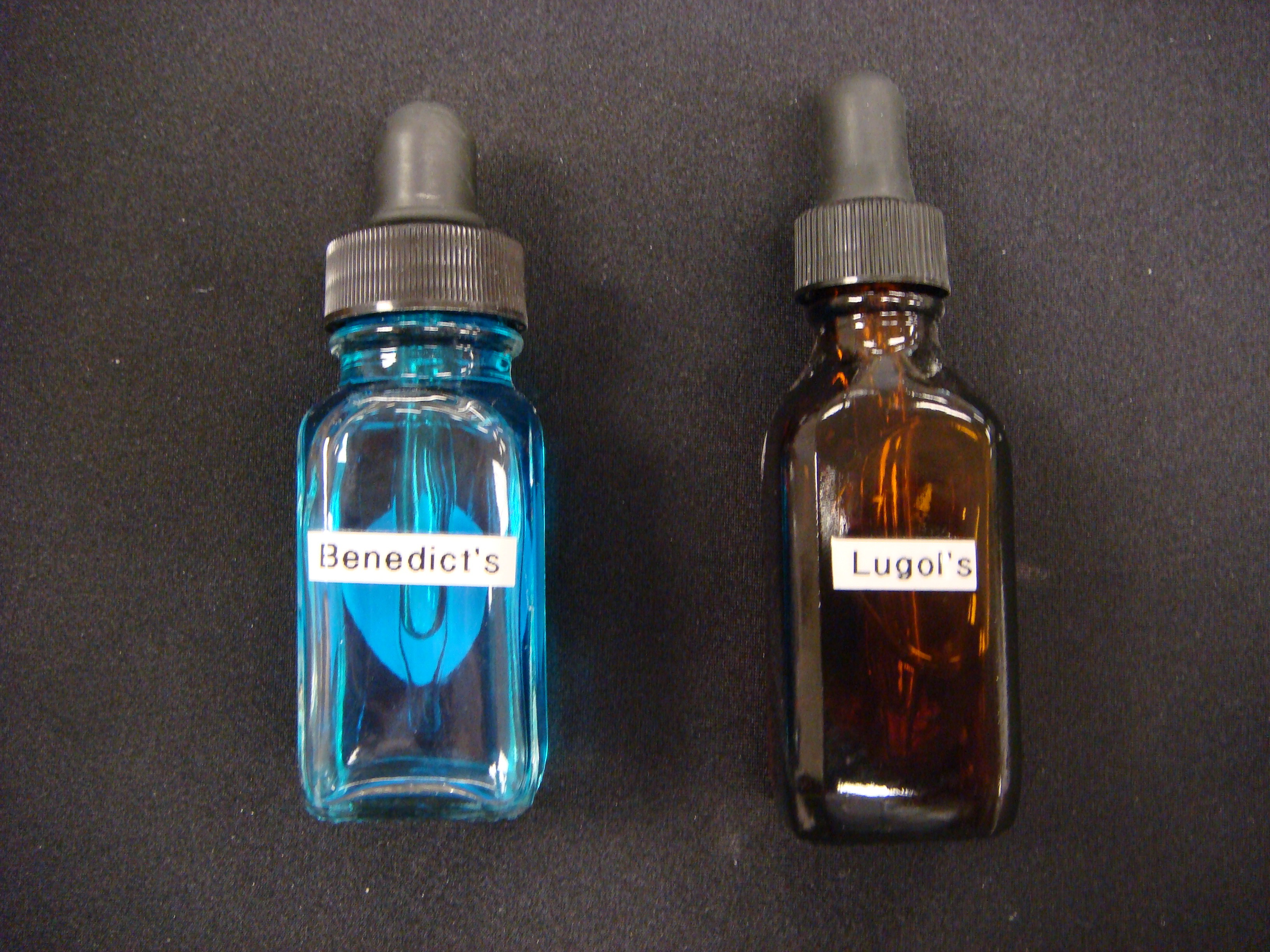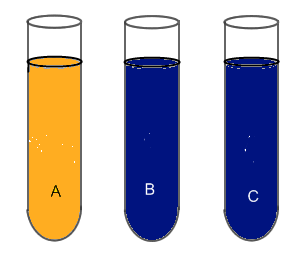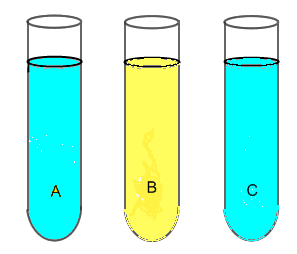
Benedict's solution is used to test for the presence of sugar while Lugol's solution is used to test for the presence of starch.
BIOL 1406
PreLab 5.4
How can I determine if specific solutes are present in a solution?
 |
It is often a challenge to determine whether or not a certain solute is present in a solution. Many different solutes have the same color (most solutions found in cells are clear), most have no odor, tasting the solution could be hazardous, etc. Sometimes we can test for the presence of a particular solute is by adding a chemical indicator to the solution. An indicator is a chemical that will react with the solute being tested for and produce a visible change. This change could be a change in color, the formation of a solid material within the solution (a precipitate), or the formation of a gas. A negative control involves adding the indicator to a solution that does not have the solute being tested for. A positive control involves adding the indicator to a solution that has the solute being tested for. By running both negative and positive controls, you are able to rule out the possibilities that the test is defective, or that your glassware is contaminated. This will help avoid drawing the wrong conclusions from your test results. |
|
Benedict's solution is used to test for the presence of sugar while Lugol's solution is used to test for the presence of starch. |
| Your Turn | |||
| Lugolís solution is often used as an indicator for the presence of starch. A student sets up the following 3 test tubes: | |||
|
 |
||
| After adding Lugolís solution (which has an amber color) to all 3 tubes, the student observes that tube A turns amber, tube B turns dark blue, and tube C turns dark blue. |  |
||
| Which tube is the positive control? | Hint | Check your answer. | |
| Which tube is the negative control? | Hint | Check your answer. | |
| Does tube C contain starch? | Hint | Check your answer. | |
| Your Turn | |||
| Benedict's solution is often used as an indicator for the presence of sugar (glucose). A student sets up the following 3 test tubes: | |||
|
 |
||
| After adding Benedict's solution (which has a blue color) to all 3 tubes and heating the tubes, the student observes that tube A remains blue, tube B turns yellow, and tube C remains blue. |
 |
||
| Which tube is the positive control? | Hint | Check your answer. | |
| Which tube is the negative control? | Hint | Check your answer. | |
| Does tube C contain sugar (glucose)? | Hint | Check your answer. | |
Close this browser window to return
to Blackboard and complete the practice quiz and assessment quiz.